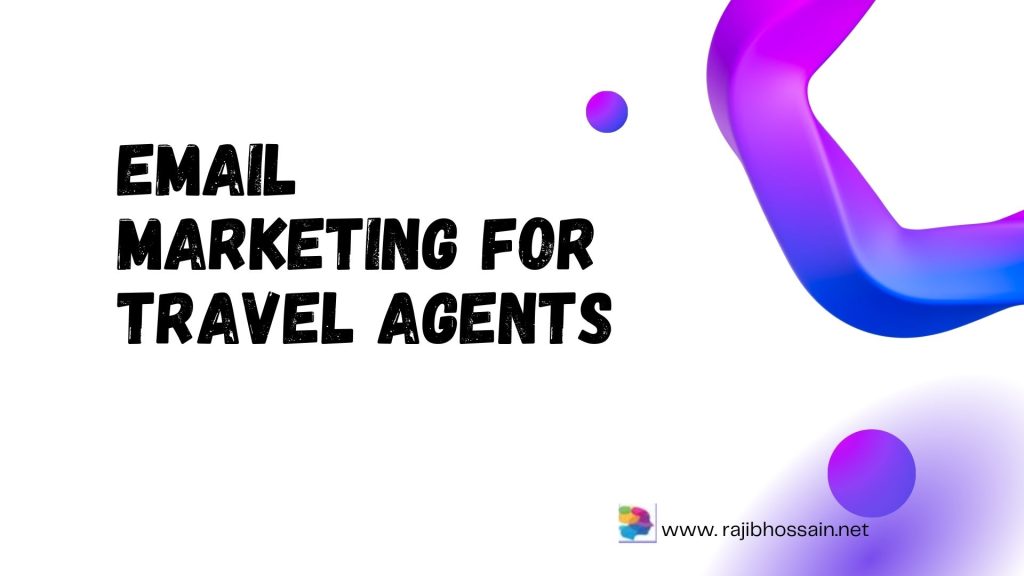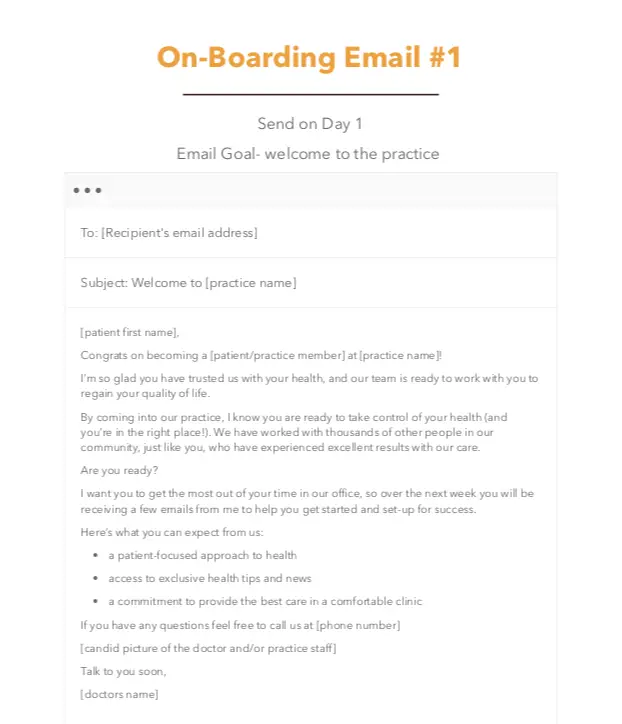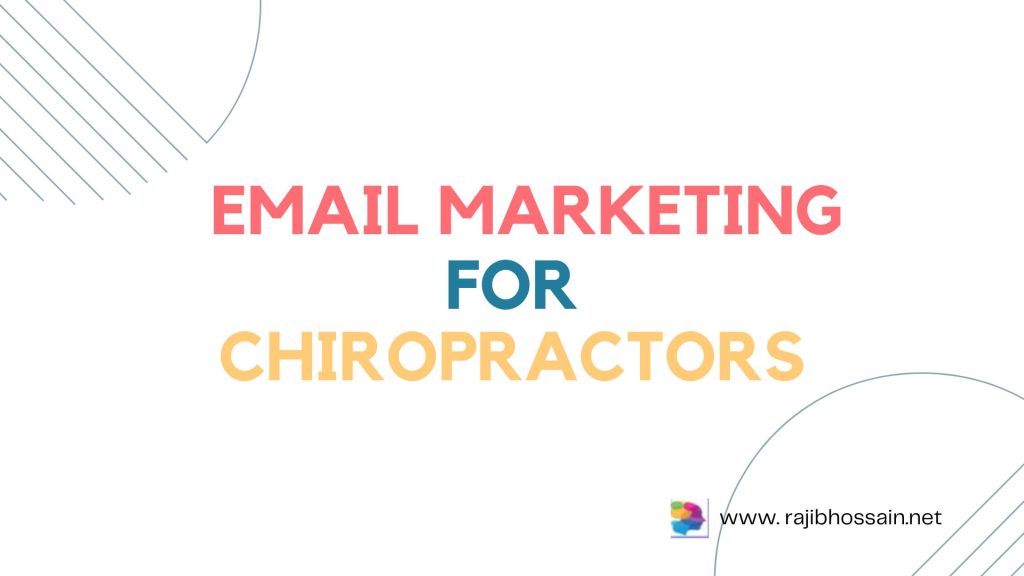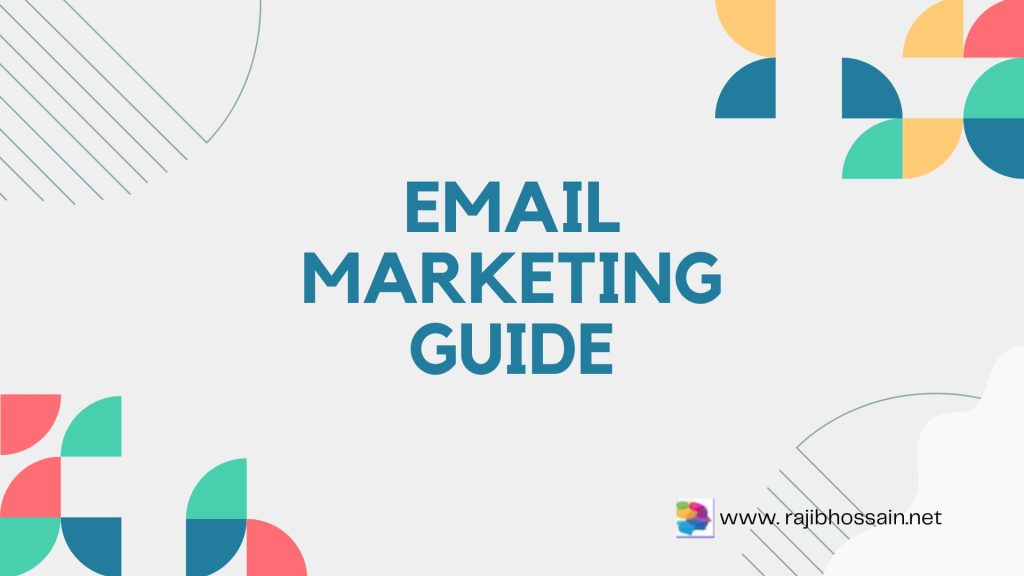
Email marketing helps travel agents reach potential clients and nurture relationships with existing ones. It drives bookings and boosts customer loyalty.
Travel agents can significantly enhance their business through strategic email marketing campaigns. Personalized emails showcasing exclusive travel deals, destination guides, and travel tips can entice potential clients. Regular newsletters keep clients informed about new packages and promotions, maintaining engagement. Automated emails for booking confirmations, reminders, and follow-ups streamline communication and improve client satisfaction.
Segmentation allows agents to tailor content to specific audiences, increasing relevance and effectiveness. Collecting feedback via email surveys can also help refine services. Leveraging analytics can optimize open rates and conversions, ensuring the email marketing strategy remains effective and results-driven.
The Role Of Email Marketing In Travel
Email marketing is a powerful tool for travel agents. It helps connect with travelers around the world. Email marketing builds trust and loyalty. It is cost-effective and reaches a wide audience.
Connecting With Globetrotters
Email marketing helps travel agents connect with travelers. It allows the sharing of exciting travel deals. Agents can send personalized travel tips and guides. This engages the audience and keeps them interested.
- Send destination guides
- Offer exclusive travel deals
- Share travel tips and hacks
Building Lasting Customer Relationships
Email marketing helps build strong relationships with clients. Regular emails keep clients informed and engaged. Personalized emails make clients feel valued. This leads to repeat business and referrals.
| Strategy | Benefit |
|---|---|
| Personalized emails | Increases client loyalty |
| Regular updates | Keeps clients engaged |
| Exclusive offers | Encourages repeat business |
Crafting The Perfect Travel Email
Sending the right email can help travel agents connect with clients. The perfect travel email informs, excites, and inspires. Let’s explore how to craft emails that lead to more bookings.
Personalization Is Key
Personalization makes your email stand out. Address recipients by their first name. Mention past trips they enjoyed. Tailor content to match their interests.
- Use the recipient’s name in the subject line.
- Segment your email list by travel preferences.
- Send special offers based on previous bookings.
Personalized emails build trust. They show that you care about the client’s needs.
Visuals That Transport The Reader
Images can make a huge difference. Use high-quality photos of destinations. Include pictures of beaches, mountains, and cities.
Use videos to show experiences. Short clips of local markets or festivals can excite readers. Make them feel like they are already there.
Visuals should be clear and captivating. They should tell a story. Inspire the reader to book their next trip.
Segmentation Strategies For Targeted Campaigns
Email marketing can boost your travel agency. To be effective, your campaigns must be targeted. Using segmentation strategies ensures your emails reach the right audience. This section explores key segmentation strategies.
Demographic Diving
Segmenting based on demographics is a simple yet powerful method. You can divide your audience by age, gender, location, or income.
- Age: Tailor your offers to different age groups.
- Gender: Customize content for male and female clients.
- Location: Promote local trips to nearby subscribers.
- Income: Offer budget or luxury travel options.
Demographic diving helps you send relevant content. This increases engagement and conversions.
Behavior-based Segmentation
Behavior-based segmentation focuses on user actions. Track your subscribers’ interactions with past emails and your website.
Here are some behavior-based segments:
- Email Engagement: Target those who open and click your emails.
- Purchase History: Send offers based on past bookings.
- Website Activity: Email users who browse specific pages.
- Survey Responses: Segment based on feedback and preferences.
Behavior-based segmentation can boost relevance and engagement. Subscribers are more likely to act on personalized content.
Timing Your Emails For Maximum Impact
Timing your emails for maximum impact can transform your marketing efforts. Travel agents can benefit greatly from sending emails at the right time. This ensures higher open rates and better engagement. Let’s dive into some key strategies.
Understanding Seasonal Trends
Knowing seasonal trends is crucial for travel agents. Send emails before peak travel times. For example, promote summer vacations in spring. Highlight winter trips in the fall. This aligns with your clients’ planning schedules.
Consider school holidays, public holidays, and special events. Create a yearly calendar. Plan your email campaigns around these dates. This approach increases the chances of bookings.
Here’s a simple table to help you plan:
| Season | Promotion Time | Travel Period |
|---|---|---|
| Summer | March-May | June – August |
| Winter | September – November | December – February |
| Spring | December – February | March-May |
| Fall | June – August | September – November |
Trigger-based Emails For Immediate Relevance
Use trigger-based emails to capture your client’s attention. These emails are sent based on user actions. For example, send an email when someone browses your website. Offer special deals or information about the places they viewed.
Here are some effective trigger-based email ideas:
- Browsing your travel packages
- Abandoned booking process
- Sign-up or form completion
- Post-purchase follow-up
Trigger-based emails have higher open rates. They feel more personal and relevant. This leads to better engagement and conversions.
Timing and relevance are key in email marketing. By understanding seasonal trends and using trigger-based emails, travel agents can maximize their impact. Start planning your emails today for better results.
Incorporating Offers And Discounts
Email marketing can boost your travel business. Offering exclusive deals and discounts is key. This makes your emails attractive. It also encourages bookings. Here, we discuss two effective strategies.
Exclusive Deals For Subscribers
Offer special deals to your email subscribers. This can make them feel valued. They will look forward to your emails. Use this strategy to build loyalty. Here are some tips:
- Offer early bird discounts.
- Provide access to members-only deals.
- Share unique travel packages.
Using these tips can increase engagement. It also boosts your bookings.
Last-minute Bargains To Spur Action
Send last-minute deals to create urgency. This can lead to quick bookings. People love spontaneous trips. Here are some ideas:
- Discounts on flights departing soon.
- Offers on hotels with upcoming vacancies.
- Promotions for last-minute travel packages.
These deals can fill your vacant slots. They also keep your clients excited.
Leveraging Customer Testimonials And Reviews
Customer testimonials and reviews can boost your email marketing. They provide social proof and help build trust. Potential clients feel confident booking with you.
Social Proof To Build Trust
Social proof is key in marketing. People trust others’ experiences. You can use this to your advantage.
Share customer testimonials in your emails. Highlight positive reviews. Show real feedback from happy clients.
Use quotes from satisfied customers. Include their names and photos, if possible. This adds authenticity. Prospective clients feel more secure.
Consider adding a section for user-generated content. Encourage clients to share their travel photos and stories. This creates a sense of community.
Here is an example:
| Customer | Review | Rating |
|---|---|---|
| John Doe | “Amazing trip! Everything was perfect.” | ⭐⭐⭐⭐⭐ |
| Jane Smith | “Best vacation ever! Will book again.” | ⭐⭐⭐⭐⭐ |
Real Experiences Encourage Bookings
Real experiences have a big impact. They make your service seem more reliable. Share stories from past clients in your emails.
Use a mix of short and detailed testimonials. This keeps the content engaging. Include diverse experiences to appeal to a wider audience.
For example:
- “Our family trip to Hawaii was unforgettable. Thank you for arranging everything!” – Sarah L.
- “The guided tour was fantastic. Our guide was knowledgeable and friendly.” – Mark R.
These reviews show the value of your service. They can persuade potential clients to book. People want to know others had a good experience.
Including testimonials in your email marketing can increase trust. It also encourages new bookings. Use real customer feedback to your advantage.
Automated Email Series For Ongoing Engagement
Email marketing is a powerful tool for travel agents. Automated email series help maintain ongoing engagement with clients. They save time and ensure consistent communication. Let’s explore some key automated email series.
Welcome Series For New Subscribers
A welcome series sets the tone for your relationship with new subscribers. It is the first impression, so make it count.
- Email 1: Welcome and thank you for subscribing.
- Email 2: Share your best travel deals.
- Email 3: Introduce your services and expertise.
Each email should be clear and engaging. Use friendly language. Add a call-to-action in each email. Encourage your subscribers to explore your offerings.
Post-trip Follow-up To Maintain Connection
A post-trip follow-up keeps the connection alive. It shows you care about the client’s experience.
- Email 1: Thank them for choosing your service.
- Email 2: Request feedback on their trip.
- Email 3: Offer a discount for their next trip.
These emails help in building a lasting relationship. They can turn one-time clients into repeat customers. Personalize each email for better engagement.
Tracking Success With Email Analytics
Email marketing is a powerful tool for travel agents. Tracking email performance helps improve strategies. Email analytics provide insights into what works and what doesn’t. Monitoring these metrics ensures your campaigns are effective.
Key Metrics To Monitor
Understanding key metrics is crucial. Here are the main ones to track:
- Open Rate: This shows how many people open your email. A higher open rate means your subject line is effective.
- Click-Through Rate (CTR): This metric indicates how many people clicked on links within your email. A higher CTR means your content is engaging.
- Bounce Rate: This shows how many emails were not delivered. A high bounce rate can indicate issues with your email list.
- Unsubscribe Rate: This measures how many people opted out of your emails. A high unsubscribe rate means your content may not be relevant.
- Conversion Rate: This tracks how many people took the desired action. This could be booking a trip or signing up for a newsletter.
Adjusting Strategies Based On Data
Analyzing your metrics helps refine your strategies. Here’s how you can adjust:
- Improve Subject Lines: If your open rate is low, try new subject lines.
- Enhance Email Content: A low CTR means your content needs improvement. Use engaging images and clear calls to action.
- Clean Your Email List: High bounce rates suggest it’s time to update your email list. Remove invalid or outdated addresses.
- Segment Your Audience: Target different groups with specific content. This reduces unsubscribe rates and increases engagement.
- Test and Optimize: Run A/B tests to see what works best. Adjust your emails based on the results.
Monitoring and adjusting strategies ensure your email marketing success. Keep tracking your metrics and refining your approach for better results.
Optimizing Email Campaigns With A/b Testing
Email marketing for travel agents can be very effective. To increase engagement, A/B testing is essential. This method helps find the best strategies. By testing different elements, travel agents can see what works best.
Experiment With Subject Lines
The subject line is the first thing recipients see. A strong subject line can greatly impact open rates. Test different styles to find the most effective one.
- Use questions to spark curiosity. Example: “Ready for your next adventure?”
- Include personalization. Example: “John, discover your dream vacation!”
- Try urgency. Example: “Last chance to book at 50% off!”
Track open rates for each subject line. Analyze which type gets the most opens. Keep refining based on data.
Content Variations To Increase Open Rates
Once the email is opened, content becomes key. Different types of content can influence engagement. Test various formats to see what resonates.
| Content-Type | Description |
|---|---|
| Images | High-quality travel photos can inspire and attract. |
| Videos | Short clips of destinations can enhance interest. |
| Text | Engaging stories or tips can hold attention. |
Also, test different call-to-actions (CTAs). Example: “Book now”, “Learn more”, or “Explore deals”. Track which CTAs get more clicks. Use this data to improve future campaigns.
A/B testing is a powerful tool. By experimenting with subject lines and content, travel agents can optimize their email campaigns. This leads to higher engagement and better results.
Staying Compliant With Email Regulations
Email marketing is crucial for travel agents. Yet, it comes with rules. Staying compliant can save you from fines. Here’s how you can stay on the right side of the law.
Understanding GDPR for Global Clients
The General Data Protection Regulation (GDPR) affects all businesses. This includes travel agents with clients from the EU. You must get explicit consent from your clients before emailing them.
- Use clear language for consent forms.
- Allow clients to easily withdraw consent.
- Keep records of all consents given.
GDPR also requires you to protect client data. Implement strong security measures. Report any data breaches within 72 hours.
| Action | Requirement |
|---|---|
| Get Consent | Explicit and clear |
| Withdraw Consent | Easy and accessible |
| Data Protection | Strong security measures |
| Report Breaches | Within 72 hours |
Can-spam Act And Email Marketing
The CAN-SPAM Act governs commercial emails in the US. Ensure your emails meet these rules. This act helps to prevent spam.
- Use accurate subject lines.
- Identify the message as an ad.
- Include your physical address.
- Provide a clear way to opt-out.
- Honor opt-out requests promptly.
Avoid misleading information. Misleading headers or subject lines can lead to penalties. Always be transparent with your clients.
For your opt-out mechanism, make it simple. Do not charge a fee for opting out. Do not require clients to provide extra information.
| Requirement | Details |
|---|---|
| Subject Lines | Must be accurate |
| Ad Identification | Marked |
| Physical Address | Included in email |
| Opt-Out Mechanism | Simple and free |
| Honor Opt-Outs | Within 10 days |
Frequently Asked Questions
How To Use Email Marketing For A Travel Agency?
Use email marketing to promote travel deals, share travel tips, and showcase destinations. Personalize emails to engage subscribers. Offer exclusive discounts and early access to tours. Use compelling subject lines and high-quality images. Track performance and adjust strategies for better results.
How Do I Advertise Myself As A Travel Agent?
Create a professional website showcasing your services and client testimonials. Use social media to share travel tips and deals. Network at travel industry events. Optimize your online profiles for search engines. Offer personalized travel packages to attract more clients.
How Do I Write An Email To A Travel Agency?
Start with a polite greeting. Introduce yourself briefly. State your travel needs clearly. Ask specific questions about packages or services. End with a thank you and your contact details.
What Is The Best Marketing Strategy For Travel Agency?
The best marketing strategy for a travel agency includes using social media, SEO-optimized content, email marketing, and partnerships. Focus on personalized experiences and customer reviews to build trust. Leverage data analytics to understand customer preferences and tailor offers.
Conclusion
Email marketing can transform your travel agency’s reach and engagement. By crafting personalized content, you build trust and loyalty. Use these strategies to boost bookings and foster long-term relationships. Stay consistent, analyze your results, and adapt to trends. Your travel agency can thrive with effective email marketing practices.




















:max_bytes(150000):strip_icc()/affiliate-marketing-6a9d278b2e91467494d7c9168e17bab5.jpg)











